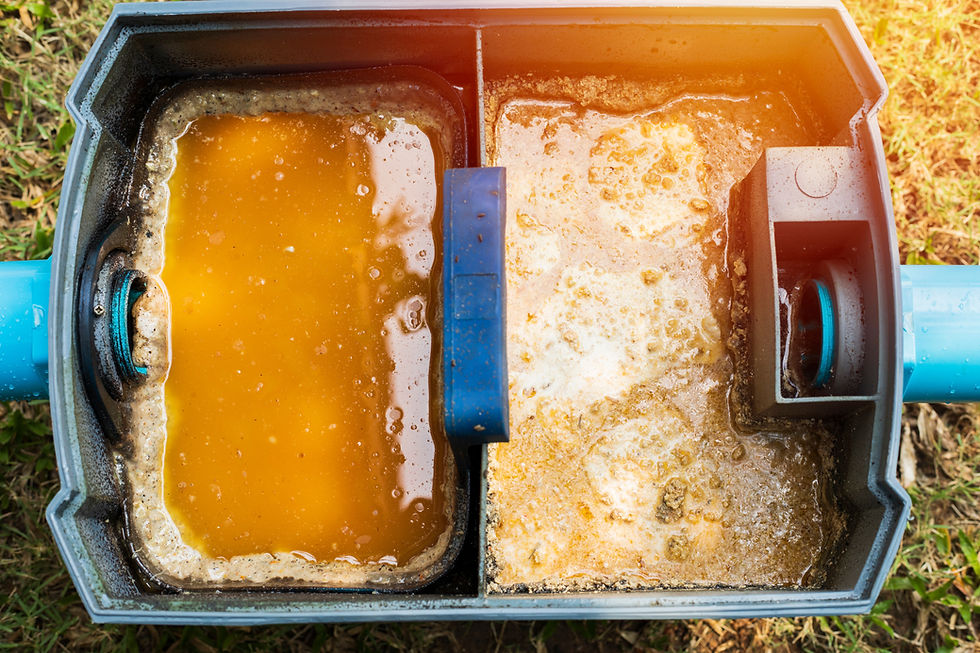When it comes to managing wastewater, fats, oils, and grease (FOG) are notorious troublemakers. They may seem harmless when they slip down the drain, but over time, they can cause significant problems in sewer systems.
This blog post will explore the science behind FOG, why it's a problem, and what is the best way to avoid problems with fats, oils, and grease. We’ll also discuss how In-Pipe Technology provides innovative solutions to tackle both existing and potential FOG-related issues.
What Are Fats, Oils, and Grease (FOG)?
Fats, oils, and grease, commonly referred to as FOG, are byproducts of food preparation and processing. They come from animal fats, vegetable oils, butter, lard, meat fats, and dairy products, as well as substances like cooking oil and margarine.
When these substances cool down, they solidify and can accumulate in pipes, leading to blockages and other serious issues.
Why Is FOG a Problem?
FOG poses several problems in sewer systems and wastewater treatment plants. When fats, oils, and grease are washed down the drain, they don't just disappear. Instead, they cool and solidify, sticking to the insides of pipes.
Over time, this can lead to significant blockages, known as "fatbergs." These blockages can cause sewer overflows, which not only result in costly repairs but also pose serious environmental and health risks.
Blockages: FOG accumulates inside pipes, gradually reducing the diameter of the pipe and eventually leading to full blockages. This can cause sewage backups in homes and businesses, leading to expensive and unpleasant cleanups.
Sanitary Sewer Overflows (SSOs): Blocked pipes can cause untreated sewage to overflow into streets, rivers, and streams, leading to significant environmental pollution and health hazards. According to the EPA, SSOs can release pathogens, nutrients, and hazardous substances into the environment, causing serious health risks and ecological damage .
Increased Maintenance Costs: Regular maintenance and cleaning are required to remove FOG build-up from pipes, which can be costly and time-consuming for municipalities and businesses.
What Is the Best Way to Avoid Problems with Fats, Oils, and Grease?
Preventing FOG-related issues requires a proactive approach, both at the source and within the wastewater treatment process. The best strategies include:
Public Education: One of the most effective ways to avoid FOG problems is to educate the public about the proper disposal of fats, oils, and grease. Homeowners and businesses should be encouraged to dispose of FOG in the trash rather than down the drain.
Grease Traps and Interceptors: Installing grease traps or interceptors in commercial kitchens can help capture FOG before it enters the sewer system. These devices separate FOG from wastewater, preventing it from accumulating in pipes.
Regular Maintenance: Regular cleaning and maintenance of grease traps and sewer lines are essential to prevent FOG buildup. Municipalities should establish routine maintenance schedules to ensure that pipes remain clear.
Biological Solutions: One of the most effective ways to manage FOG is through the use of biological solutions, such as those provided by In-Pipe Technology. By introducing specialized microbes into the sewer system, FOG is broken down at the source before it can cause blockages.
How In-Pipe Technology Solves FOG-Related Issues
In-Pipe Technology offers an innovative approach to managing FOG in sewer systems. Our engineered microbial solutions work proactively to break down fats, oils, and grease before they cause problems. Here’s how our approach works:
Microbial Inoculation: We introduce a blend of naturally occurring, non-pathogenic microbes into the sewer system upstream. These microbes are specifically designed to digest FOG, converting it into water and carbon dioxide, which prevents it from accumulating in pipes.
Continuous Treatment: Unlike traditional methods that address FOG after it has already caused blockages, our approach is continuous. The microbes are continuously dosed into the sewer system, providing ongoing protection against FOG buildup.
Environmentally Friendly: Our microbial solutions are environmentally friendly and help municipalities and businesses meet environmental compliance regulations. By reducing the amount of FOG in the sewer system, we help prevent sanitary sewer overflows (SSOs) and reduce the environmental impact of wastewater management.
Proven Results: Our approach has been proven to significantly reduce FOG-related issues. For example, a case study in Texas City showed a dramatic reduction in FOG accumulation and related blockages after implementing our microbial solutions.
When it comes to managing wastewater, knowing the best way to avoid problems with fats, oils, and grease is essential. FOG can cause significant blockages, sanitary sewer overflows, and increased maintenance costs if not properly managed.
Public education, regular maintenance, and the installation of grease traps are important steps in FOG control. However, the most effective solution is to treat FOG at its source using In-Pipe Technology’s innovative microbial solutions.
By breaking down fats, oils, and grease before they enter the treatment plant, we help municipalities and businesses maintain clear sewer systems, prevent costly repairs, and protect the environment. If you’re looking for an effective, sustainable solution to FOG-related issues, In-Pipe Technology is the answer.
References
Environmental Protection Agency (EPA) guidelines on FOG management
Texas City Case Study: In-Pipe Technology’s success in reducing FOG-related issues.
Visit In-Pipe Technology for more information on how we can help you manage FOG control in your wastewater systems.



Commentaires